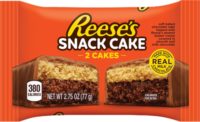![]()
Drug Store Channel Trends
by Tom Zind
Already a strong retail segment for candy, the drug
store market has still more untapped potential, experts maintain.
Not that long ago, drug stores and sweets went together like
a hand and a glove. Any Main Street drug store worthy of the name was anchored
by a soda fountain and a candy counter, consciously offered as image antidotes,
perhaps, to the necessary, but more distasteful business of serving up the bitter
pill.
While that quaint era is lost to history, the modern
drug store has hardly severed its historic ties to sweets. Candy and other
confectionery products, particularly seasonal offerings, remain an
important part of the non-pharmacy end of the drug store business. In fact,
as drug stores vie for the consumables business of both the convenience and
stock-up customer, and not just the occasional prescription-filler, sweets
may be poised to play an even more central role in boosting the fortunes of
the vital “front-end” part of the business.
Moreover, the drug store channel may be uniquely well
positioned to become a leader in merchandising products in the
fastest-growing sector of the candy industry: products targeted to those
seeking low-sugar or low-carbohydrate options. Occupying an unrivaled
position of consumer trust, and looked to for healthy lifestyle solutions,
drug stores could become the candy industry’s best friend as it tries
to navigate emerging consumer concerns such as obesity, diabetes and diet.
Indeed, as the candy industry and the drug store
industry face their own challenges, both may find it to their benefit to
forge closer ties. In search of higher customer rings, drug stores may well
look to candy as part of a broader foods strategy. And, in figuring out how
to better connect more health-conscious consumers, the candy industry may
find the drug channel worthy of even more focused attention.
Channel sales strong
But make no mistake. The candy-drug store relationship
is already strong and quite possibly mature, raising the question of how
much can be done to significantly bump up candy’s healthy growth
rate. Data from sales trackers point to fairly steady growth in drug store
candy sales over the last several years, while trade association figures
suggest candy has become a solid contributor to store sales.
By the tally of Chicago-based Information Resources
Inc., drug store sales of chocolate and non-chocolate candy, excluding gum,
totaled $1.9 billion for the year ended Dec. 28, 2003. Lumping all candy
and gum sales together, IRI said sales in the drug store channel increased
2.8 percent for the same period. That growth rate was slightly below food
store sales growth of 3 percent, but managed to actually outpace combined
food/drug/mass sales growth (excluding Wal-Mart) of 2.2 percent. For the 12
weeks prior to Dec. 28, the drug channel registered the best candy sales
increase in the food/drug/mass channel, at 3.3 percent.
In even more current data, ACNielsen concluded that candy sales
(excluding gum) rose 5.9 percent in the drug channel for the 52 weeks ended
March 20, 2004, while unit sales rose 4.8 percent. In slight contrast to IRI
data, it placed total dollar sales for the period at almost $2.3 billion.
The National Association of Chain Drug Stores’
(NACDS) tally was closer to that of ACNielsen. NACDS said sales totaled
nearly $2.28 billion, good for 5.6 percent of total channel front-end sales
for the period.
“Candy has historically been a wonderful category for the channel,”
says Steve Perlowski, vice president of industry affairs for the association.
“In terms of the best impulse items for the drug store, candy is right up there,
if not No. 1, then certainly No. 2.”
Candy emphasized
Talk to drug store candy category managers, and you hear the
same words of praise. Candy, some buyers say, has become more important to sales
and profits as drug stores try to build a broader customer base and offer an
alternative shopping experience to supermarkets, mass merchants and even convenience
stores.
“We’re putting a lot more emphasis on candy,” says John Arundell,
food/candy/beverage buyer for May’s Drug Stores, a 38-unit chain based in Tulsa,
Okla. “In our newer stores, we’re moving more of it from the center or the back
of the store up to the front in order to make it more visible. One of the techniques
we’re using is the bullpen-merchandising concept where the cash register area
is surrounded by a wall of merchandise that includes candy. No one goes into
a pharmacy thinking they’ll get a candy bar, but if they see it, they’ll often
buy it.”
Arundell says his regular display area for candy has
remained mostly steady the last two years. A minimum of 20 feet is devoted
to peg bag product, and another 12 feet contains gums, mints and candy
bars. He’s constantly on the lookout for new items, and will
regularly move out slower moving items to make room for hot prospects, such
as the Snickers Marathon Bar that may be a particularly good fit for the
store’s clientele.
“We’re definitely able to compete with discounters on space
for seasonal products, but we also pride ourselves on keeping an eye on what’s
new on the market and being a market leader in new candy items,” Arundell says.
Matt Kirk, senior category manager for Brooks Pharmacy, Warwick,
R.I., says drug stores have done a good job of developing a category other competing
channels may have neglected. “I think consumers look at us for a better selection
of both everyday and seasonal candy,” Kirk says. “It’s a secondary category
for many supermarkets, one I don’t think they’ve cared much about in 30 years.
They’re missing some opportunities.”
In overseeing the category for Brooks, Kirk strives for a good
selection of peg bag candy, but also handles regular bar candy and does a respectable
laydown bag business that’s particularly robust at seasonal periods like Halloween.
Multiple locations
Multiple selling locations are coming in particularly
handy for drug stores trying to capitalize on the growth of candy with
reduced sugar and carbohydrate content. An increasingly popular tactic is
to apportion displays between the standard candy aisle, a nutritional
products set and freestanding displays positioned near the pharmacy.
Russell Stover Candies, Kansas City, Mo., tries to stake out
multiple selling locations in drug stores for its extensive low-sugar and low-carbohydrate
candy line. Mark Frame, senior vice president of sales, says most product sales
still are generated in the main candy aisle of drug stores. But in stores that
have diabetic product sets, merchandising the products in those locations also
makes sense because diabetic shoppers are likely to miss the candy aisle.
At May’s Drug, Arundell merchandises
reduced-sugar candy in both the main candy section and in a secondary
position near the pharmacy where other dietetic products are sold.
“I just finished up doing a plan-o-gram for candy and ended
up increasing the square footage of the sugar-free side of it from four feet
to eight feet,” he says. “But in the pharmacy area, the amount of space we devote
to it varies, but it’s typically about four feet. I think we’re definitely becoming
a destination for those types of products. They’re a perfect fit for us.”
Sales figures from IRI bolster Arundell’s
assessment of that emerging candy category. Dollar sales of dietetic candy
in the drug store channel topped $127.3 million for the year ended March
20, 2004, a 65 percent increase. Sales have grown at a near exponential
clip from the beginning of the decade.
A bigger selection of low-carb and sugar-free candy
may be especially important for drug stores, according to Alison Chaltas, a
drug channel trends watcher and president of Interscope, a Southport,
Conn., sales and marketing agency. As drug stores try to cement an image of
providing products that fit a healthy lifestyle, Chaltas says some may be
conflicted in trying to generate more sales and profits from candy.
“Drug stores are in the interesting position of
how to build a healthful image and advance healthy consumer lifestyles, but
at the same time try to build confectionery sales,” she says.
But chances are it will take more than diet candy, which may
be a shooting star, to fuel the kind of growth that both candy makers and the
drug channel would like to see from the category in coming years. Much will
likely depend on retailers making a firmer commitment to overall front-end sales
of consumables, an area where competition with mass merchants, dollar stores,
supermarkets and convenience stores remains stiff. In addition, it may take
more effort on the candy industry’s part to do a better job of creating solutions
tailored to the channel’s unique needs through more targeted products, merchandising
solutions and selling programs.
Drug channel evolves
As an important market for the candy industry’s
products, the evolving drug store channel certainly bears watching,
especially as it consolidates into fewer, but larger hands. Despite J.C.
Penney’s recent sale of its 2,800-store Eckerd Drug chain to two
retail organizations — the Jean Coutu Group Inc., and CVS Corp.
— signs point to large national chains garnering more of the
business. Sales at the nation’s 39,583 units in 2003 — 20,704
of which are chain-affiliated — reached $164 billion, up a healthy
7.2 percent over the prior year. By comparison, 1999 sales totaled $121
billion. Chain-store sales accounted for $123.6 billion of the 2003 total,
a 7.7 increase over the previous year.
While the numbers still pale in comparison to mass
merchandisers, as well as supermarkets, which tallied $433 billion in 2003
sales in slightly fewer stores, the drug store channel has been one of the
fastest growers in the retail sphere. According to NACDS’ Perlowski,
drug stores have seen the fastest sales growth
of any retail channel over the last decade. In a recent report on the
outlook for the drug channel, market research firm Retail Forward, Inc.,
projected that sales will grow 6.7 percent annually over the next five
years.
Despite the prospect of increased prescription-filling
competition from mail-order and other channels such as supermarkets,
pharmacy sales will fuel much of that growth, according to Retail Forward.
But it noted that front-end sales would have to shoulder more of the
burden, even as competition in that area will grow more heated.
Part of Retail Forward’s prescription for
improving front-end sales involves identifying products and marketing and
merchandising programs that will attract more customers, it says. Another
element, according to Perlowski, is positioning the drug store to compete
more effectively with other retail outlets. The opportunity is there
because the average drug store shopper is not as pigeonholed as might be
suspected.
“Only 40 percent of trips made to the drug store are with the
sole intent of buying a prescription,” he says. “There are a host of other destination
categories. Drug stores are still the primary location for getting photos developed,
and women’s health and beauty aid products is another one of the drug store’s
destination categories.”
While candy, with the possible exception of seasonal,
hasn’t been one, the opportunity for it to hitch a ride in the
shopper’s cart may grow as drug stores work to boost convenience,
selection, and the overall shopping experience. Frame, of Russell Stover,
which recently joined NACDS, says the drug store channel’s evolution
bears watching.
“Drug stores are adding more food, including candy, to the mix
and they’re using that to get customers into the store more frequently,” he
says. “A lot of people are starting to shop them as convenience stores, too,
as chain retailers move to bigger freestanding units that allow shoppers to
take advantage of easy in-and-out convenience. We view the chain drug store
market as a major growth opportunity.



